
View through the first floor of the doll house sized construction model
Lightweight House
Preamble
Lightweight building needs to become accessible. Our plan, ultimately, is to experimentally build a three floor lightweight house. It will be built with existing materials and methods, which may not necessarily stem from building tradition. The house will have to comply with existing regulations to the extent that they are defined in relevant terms and applicable to the quality of use.
Lightweight building implies an unusual approach to house design. It starts at the small scale of material composition. Materials themselves are designable structures, consisting of various substances, elements and substructures, such as fibres, metal, polymers, wood chips and clay particles, to name quite many.
In this project (nicknamed ‘3XNIX’, in English three times naught) we want to explore this field for building and construction by studying opportunities in different fields and presenting them in a doll house scale model. There have been earlier activities in the ‘Building Lightness’ project and a number of workshops (see archive). These, however, did not concern one particular building, but they do provide us with useful principles, such as avoiding moulds and frames by letting structures adjust to circumstances on their own terms.
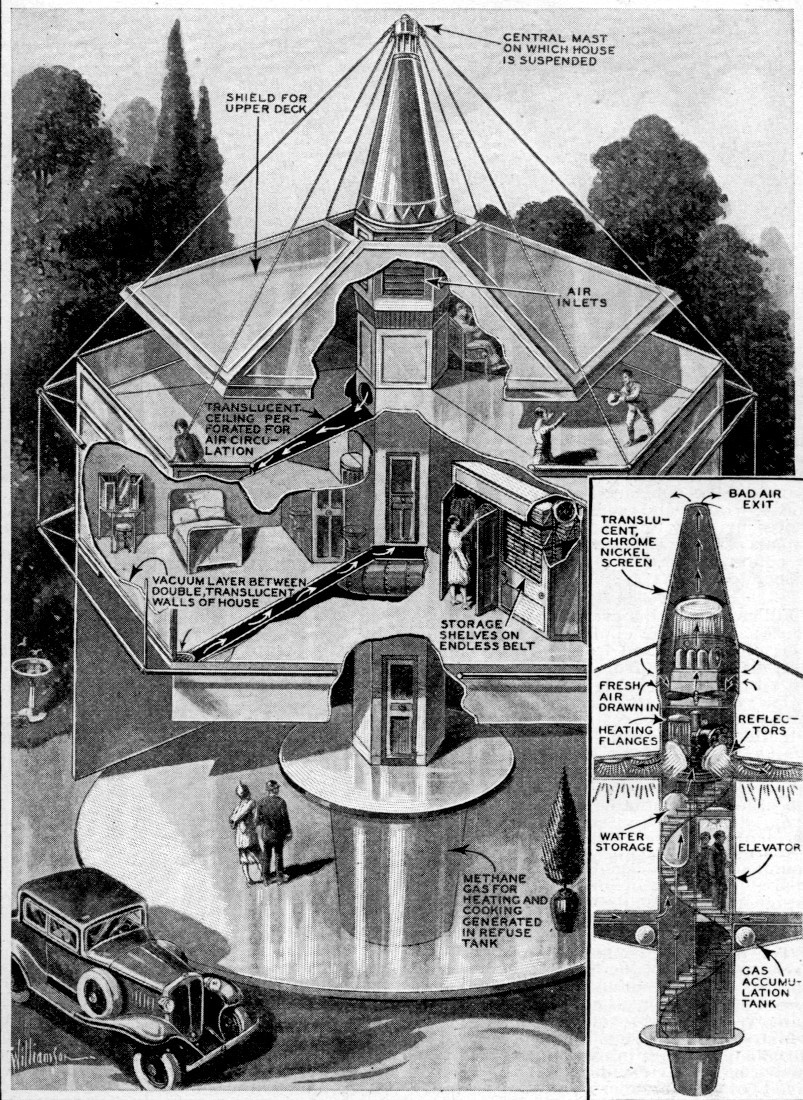
Buckminster Fuller started his career working on the development of a suspended house.

Fire safety is defined by the whole structure.

Glassfibre in polyethylene bags provide lightweight sound and temperature insulation inside a Boeing 777 cabin.
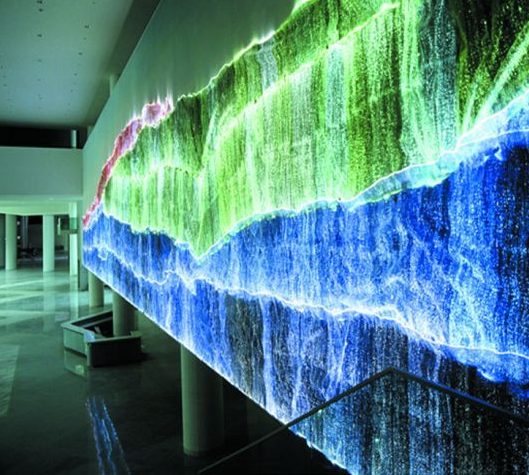
An example of structural integration: Luminous fabric produced by LumiGram®. Design by atelier Kim Gotlieb.
Nine points on physics
The general principles of lightness define design decisions for the house project. Forces of gravity and weather conditions need to be dealt with in a main shape that is defined by tradition and context. Still, within that shape that dates back centuries, opportunities for avoidance of stress concentration do occur.
- Favouring hanging over stacking saves material. Vertically the structure is defined by lightweight supports from which everything else, walls, floors, can hang.
- Horizontally the main trick is to avoid bending in floors, which habitually have always been their characteristic function. Hanging floors in a fitting catenary loop, like rope bridges, is a possible alternative.
- Obviously if stacking is unavoidable the load elements to be invincibly light.
- Defining structure starts at the level of material composition.
Apart from gravity, load and wind forces, structural and material integration involves dealing with other physical phenomena: fire, vibration and soundproofing, climate control, lighting. This requires careful composition of ingredients, minimizing energy consumption. Possibilities to interweave, laminate or otherwise mix materials with relevant properties are increasing, all the way from the nanometre level. Integration may lead to new ideas of design. It is not that long ago that the communication device that everybody now recognizes as a smartphone, would have been considered a miraculous piece of material.
- According to standard rules for fire resistance a building should allow people to safely escape during a certain amount of time. Whether certain separate materials can burn or not is far less relevant. The whole concept prevails over separate elements.
- Vibration proofing depends on stiffness of elements and fixtures between them. New composite structures may allow more movement and may therefore require more dampening.
- Sound proofing and lightness are often believed to be contradictory, based on the assumption that you need mass to hamper sound going through closed walls. Mass does work, but dampening sound in fact depends on disabling structures to transfer sounds. Layering different materials works. Sound proofing is designed.
- Climate control scenarios depend on maintaining a convenient balance between inside and outside through adapting ventilation and insulation, energy input and output, heat accumulation and radiation, humidity regulation, and the speed of all these capabilities. Design involves material compositions and systems.
- Lighting depends on balancing and exploiting circumstances. Daylight is the main source. Materials (glass, plastics) can guide it to where it is required. When not available minimum energy lighting can do the job.

This 57 storey tower in Changsa, China, was built with prefab elements in just 19 days. By and large the reduction in use of concrete amounted to 15000 trucks.

Dome structure made from inflated bin liners held together with rubber bands: no frame
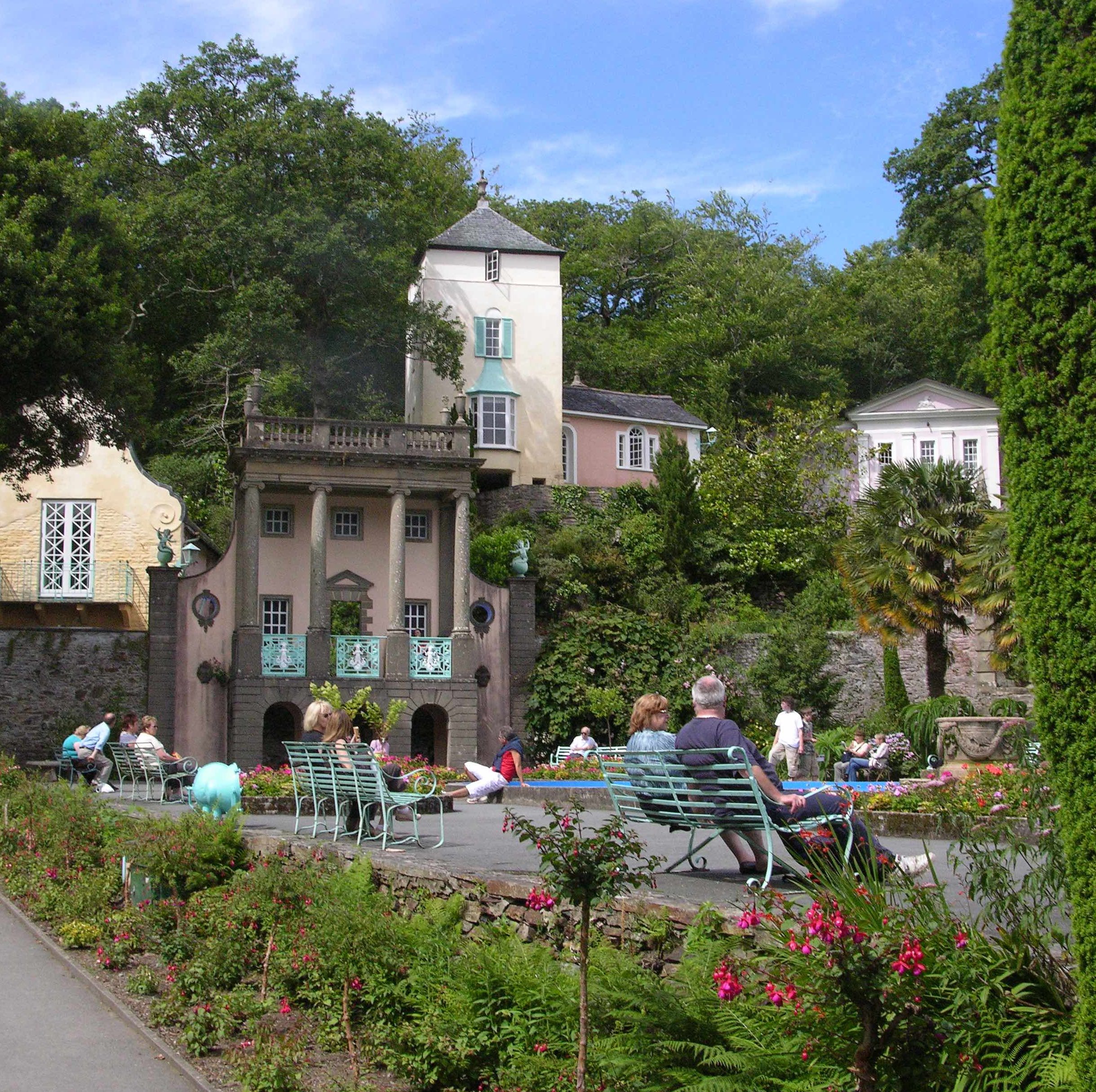
The village Portmeirion in North Wales has buildings that consist of found building parts: the front of a former fireplace is now a façade.
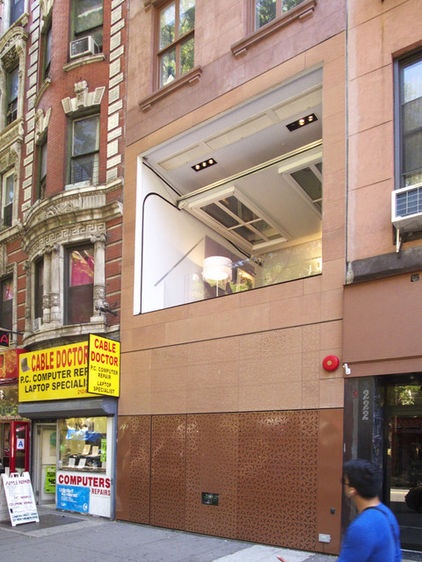
Folding façade in New York: creative garage door interpretation
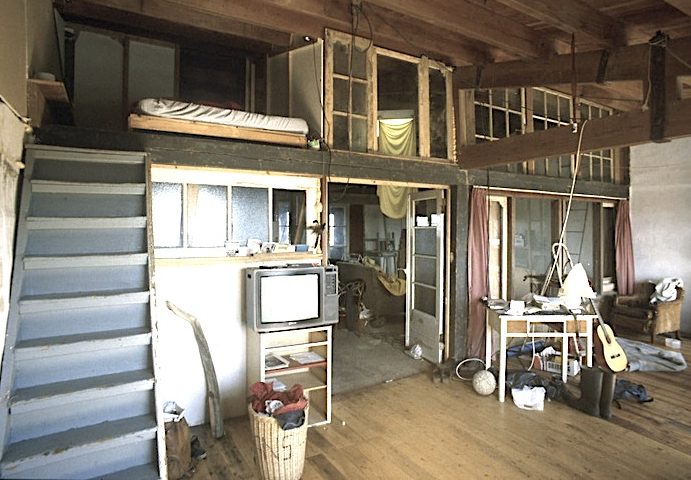
Squatters have a very pragmatic and flexible approach to interior arrangements.
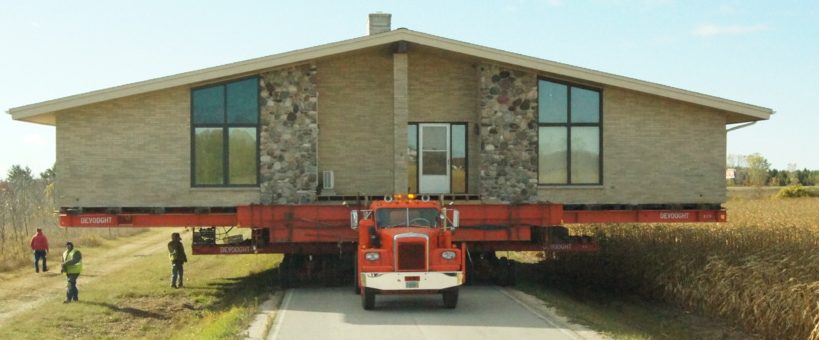
Zero waste moving results in value cultivation. The house could have been lighter.
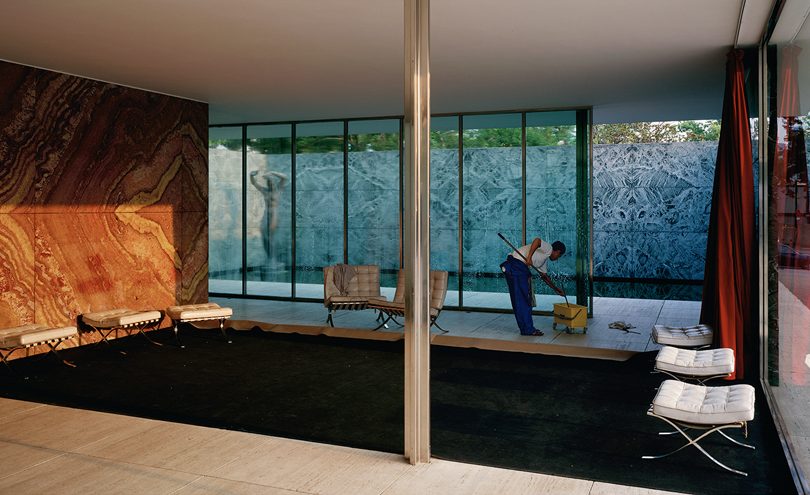
Mies van der Rohes Barcelona House requires regular cleaning.
Seventeen points on processes
The lightweight house must be in a normal price range. This mainly implies that the construction process should take minimum effort. High tech parts may be mass produced.
- Transportation should be in balance with mass: the heavier material used, the closer to the building site it must be available.
- Advanced and lightweight elements can be brought in from afar, different continents if necessary.
- Handling lightweight elements provides a requirement of convenience. It could for instance be: two persons should be able to lift every structural part.
- Forming should be kept a matter of material properties that are manipulated with minimum effort. Workshops have indicated opportunities. It may be possible to avoid the use of moulds to shape materials by anticipating their behaviour and capture form that occurs under specific circumstances.
- Structures must be simple. Functional integration in materials may be applicable on all levels. For instance, there may be opportunities to integrate frame functionality in materials that close walls, thus avoiding the need of a separate frame.
- Availability of materials and construction tradition is different everywhere. So are the implications of lightweight design.
- Construction is only a part of the scenario written around the life of a house. Breaking it down, repairing and reusing it, or parts of it, and possibly (but not necessarily) recycling, need to be considered as well
A very important question arises from opportunities that emerge from lightness. The benefits for producers and builders are clear: reduction of costs in transportation and a possibly radical increase in construction speed. For those who live in a lightweight house lightness would be pointless if it would just imply replacement of the traditional house. This would hamper acceptance. On the other hand, weight reduction can imply that the dwelling becomes more useful. Lightness contributes to convenience and freedom of use.
- People who live in the light house can, for example, open the entire façade and the roof and make playful adjustments by remote control.
- All services, water, sewer, and energy, are always within reach for easy changes.
- Rooms may be knock-down products that you buy in a store, instead of heavy and fixed space dividers.
- Functionality may be deprogrammed. Anything happens anywhere. For instance, there needn’t be a fixed place to cook. Light dwelling facilitates creative pragmatism, almost like squatting. This is not an obligation.
- The point of lightness is that change, adaptation, rebuilding even, take minimum material and effort.
- Since all is so easily adaptable, layout, style, decoration, are up to those who use the house. This dwelling consists of parts, most of which are easily moveable.
- Living in a place will have a different feel. It might be possible to regularly change the look of one’s house, which would produce a different, more playful idea of a street.
- Moving will also provide a different experience. One can, for example, take rooms to the next place, or sell them second hand.
- In the design of a new set of construction principles, it is important to take into account ‘what will happen next’. Currently it is fashionable to advocate ‘circularity’, which is a rather technical notion of keeping materials in the running. In practice this notion is inadequate. Reuse and recycling cannot be defined as circular phenomena. Parts and materials each and every time will turn up in different places, times and applications. Moreover, recycling is an activity that destroys value at the cost of energy and effort. It is not a self-evident activity.
- Value cultivation is more appropriate. It means that object value needs to be nourished in every possible way (repair, contextualisation, use, narratives), for users and those who identify with it, to keep on considering the object worthwhile.
Main structure
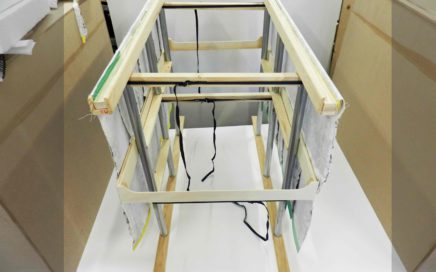
Suspended fabric and foam
Since the house will have to fit within a a line of normal dwellings, the structure is simply rectangular. The main difference is that the floors are suspended from beams, which in their turn rest on columns. There is no ground floor. The street connects to the garden, providing storage space underneath for vehicles and garden tools.
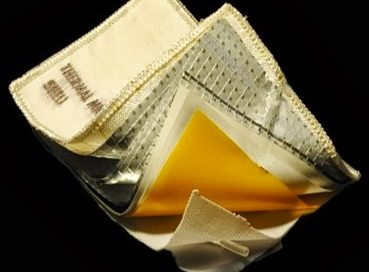
Materials
For different parts of 3xNIX combinations of materials will be developed. One material may contribute to tensile strength, another to energy absorption, a third to light guidance, and so on.
Lightweight room
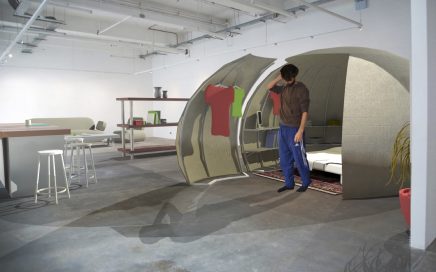
Portable space
In a lightweight house rooms can be separate products that you buy in a store. Such a portable room could also be a means to convert office space into living space. It is an opportunity for a lightweight spin-off.
